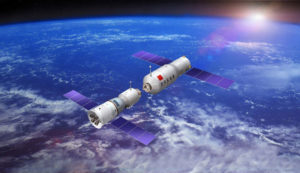
This story is republished with the kind permission of the editors of The BRICS Post, where it was originally published on April 6, 2017.
BRICS (Brazil, Russia, India, China, and South Africa) countries are looking to build space science cooperation as the bloc seeks a bigger share of the $300 billion global space industry.
“BRICS countries constellation is only the beginning. That’s the foundation of cooperation that we established mechanism. In the future we want to expand to space science mission, to telecommunication and even navigation system cooperation,” Yulong Tian, China’s National Space Administration Secretary General, told Russian agency Sputnik on April 6, 2017.
BRICS countries are aiming to set up a joint grouping of space satellites for remote sensing of Earth, Igor Komarov, the head of the Russian Space Agency (Roscosmos), said in November.
Russia will host heads of space agencies of BRICS member states in the coming months.
Both China and India have ambitious space programs in place, while Russia continues to run the world’s only reliable “space taxi” after the US retired its space shuttles in 2011.
The United States is dependent on Russia’s propellant module to keep the International Space Station in orbit.
International Space Station is a $100 billion science and engineering laboratory, orbiting 250 miles (400 km) above Earth. The US uses Russian spacecraft Soyuz to ferry American astronauts to and from this space station.
By 2018, NASA and its partners will have to pay Russia roughly $81 million per person to ride a Soyuz to the ISS and back again, according to a Business Insider report.
Chinese President Xi Jinping has called for the country to establish itself as a space power.
The US Congress has banned NASA from engaging in cooperation with its Chinese counterpart due to security concerns.
China in 2003 became the third country to put a man in space with its own rocket after the former Soviet Union and the United States.
China’s latest manned space mission is due in October and is aiming for a manned moon landing by 2036.
In late 2013 completed the first lunar “soft landing” since 1976 with the Chang’e-3 craft and its Jade Rabbit rover.
Neighbour India successfully launched 104 satellites in a single mission in February, setting what its space agency says is a world record of launching the most satellites at one go.
Republished at: https://spacewatch.global/2017/04/brics-space-science-cooperation/
 SpaceWatch.Global An independent perspective on space
SpaceWatch.Global An independent perspective on space

